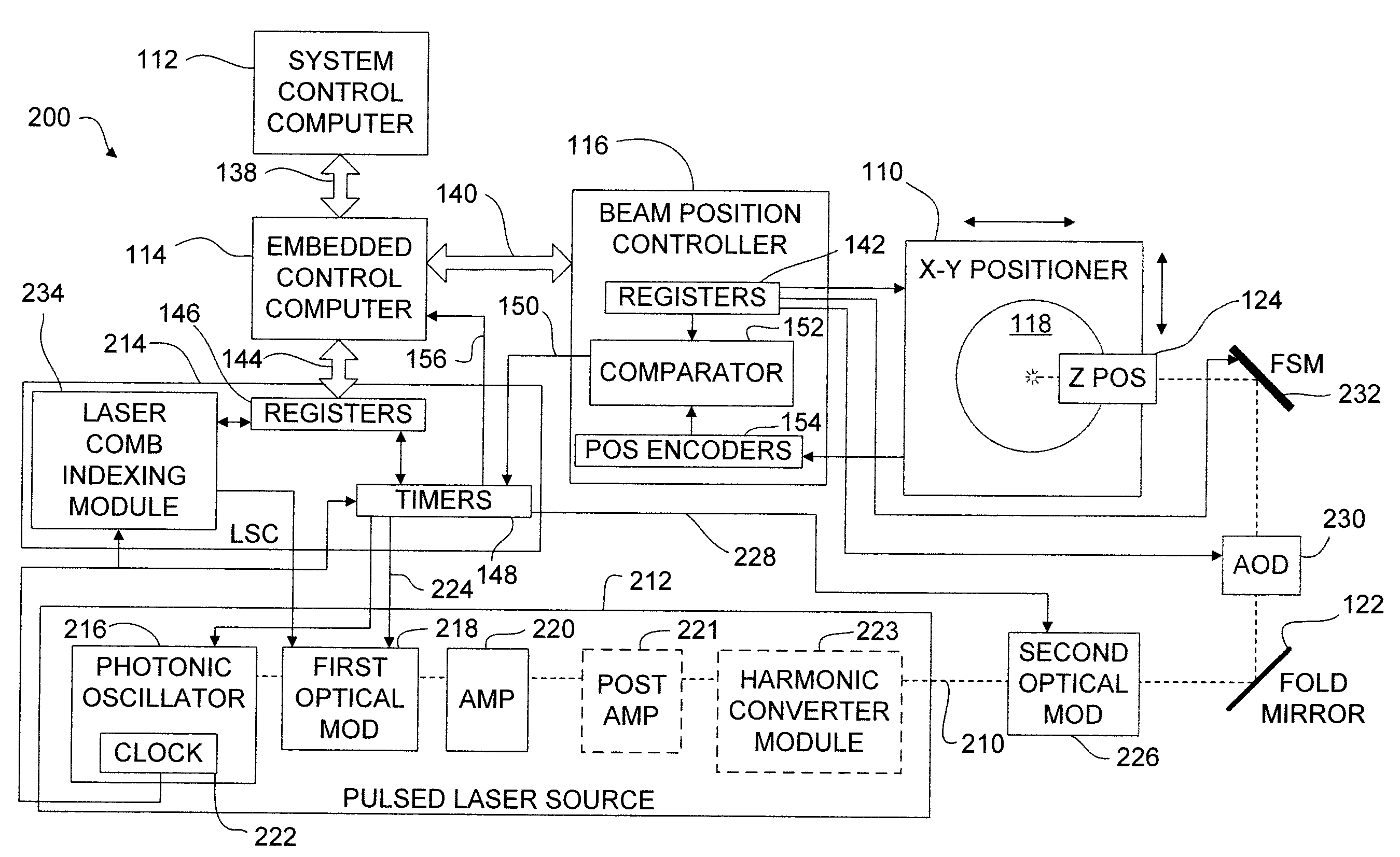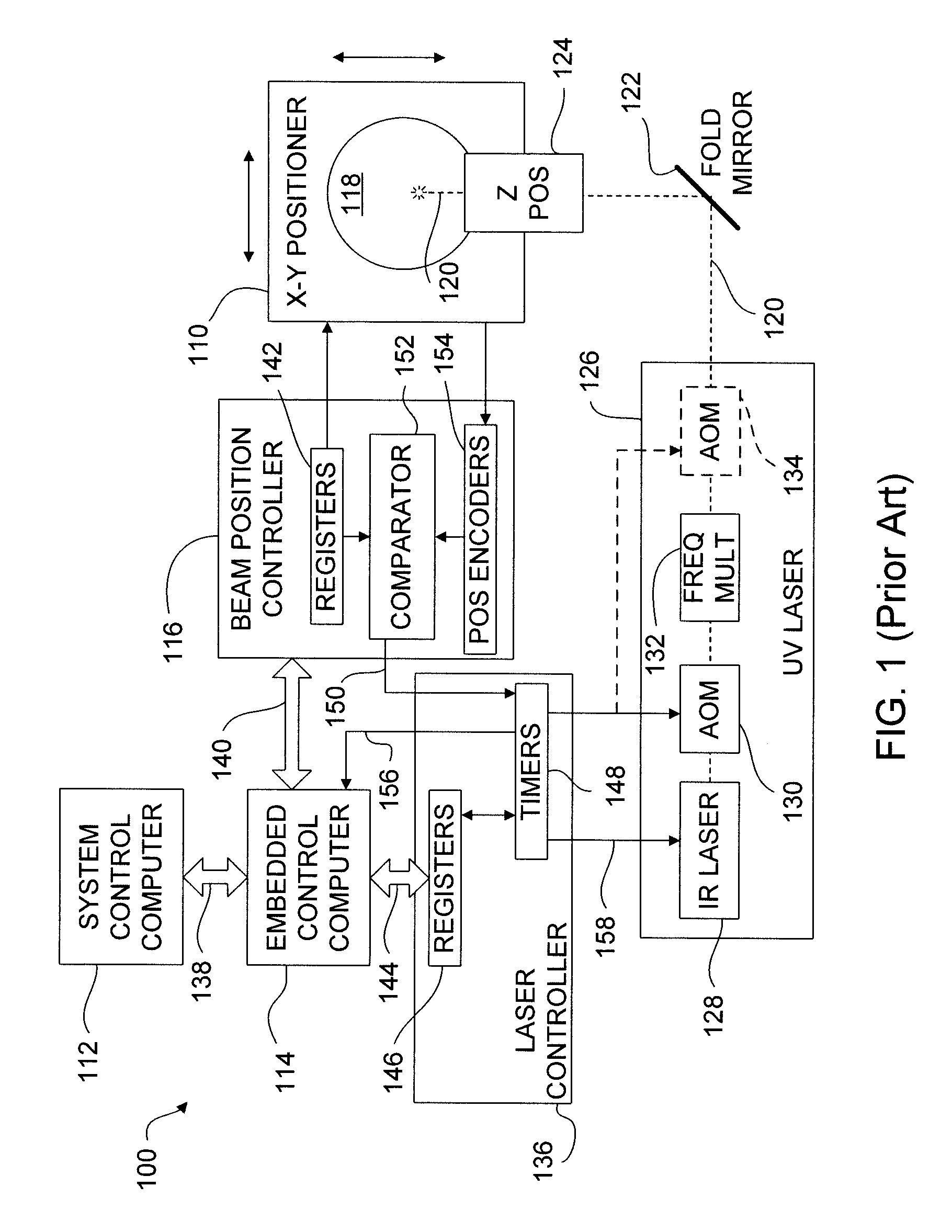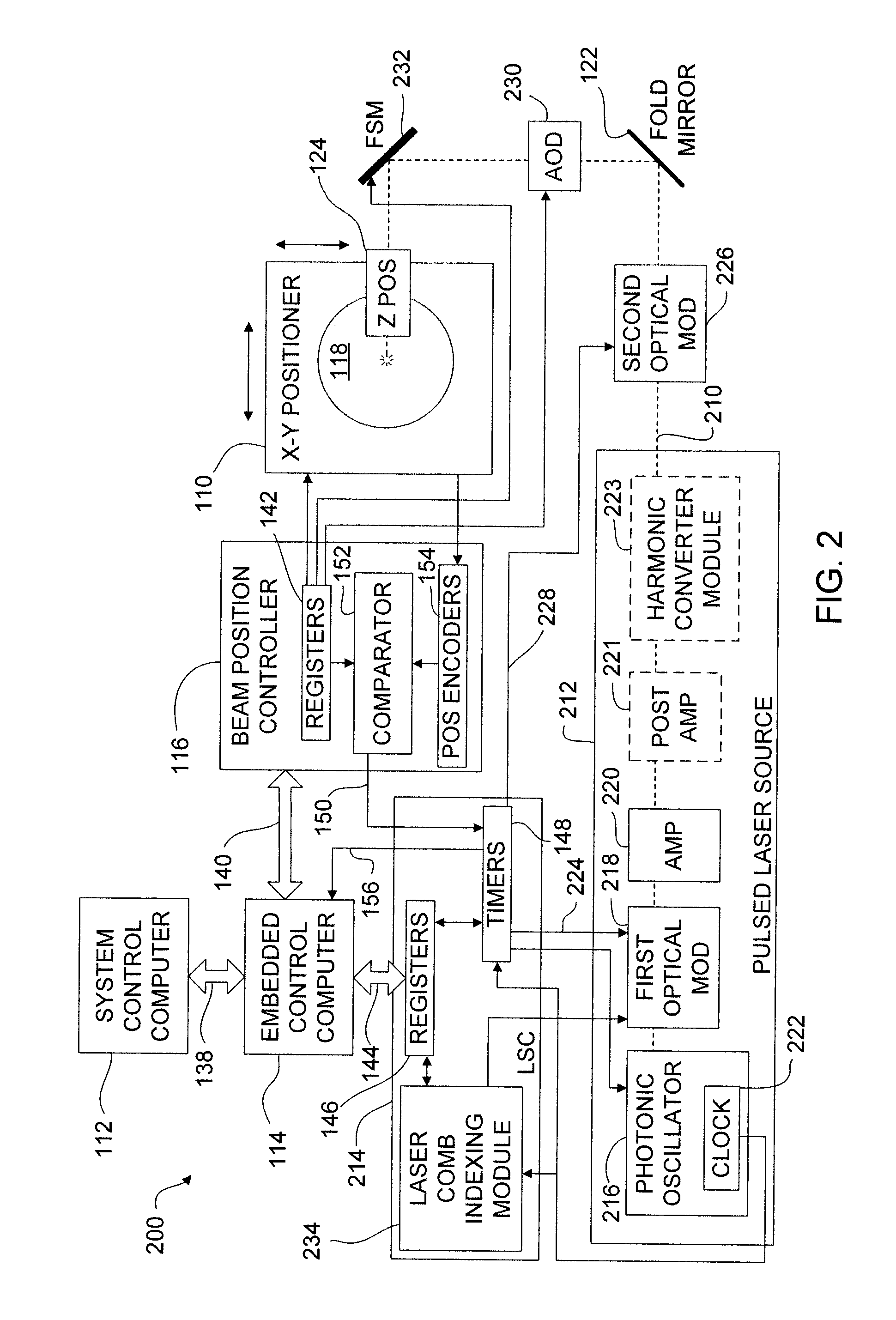Photonic milling using dynamic beam arrays
a beam array and photonic technology, applied in metal-working equipment, welding equipment, manufacturing tools, etc., can solve the problems of difficult to take the most advantage of forthcoming high-precision lasers, complex laser optical sub-assemblies of dual-beam and multi-beam laser systems, and high cost of construction
- Summary
- Abstract
- Description
- Claims
- Application Information
AI Technical Summary
Benefits of technology
Problems solved by technology
Method used
Image
Examples
Embodiment Construction
[0039]In one embodiment, a photonic clock is used as a master timing element to coordinate beam positioner control elements in a laser processing system. The photonic clock may be a pulsed output from a photonic oscillator in a pulsed laser source. The photonic oscillator may be a seed oscillator or a master oscillator. The beam positioner control elements use timing signals from the photonic oscillator to synchronize the alignment of target structures on a workpiece with the emission of laser pulses from the laser system. One or more pulses from the laser source are transmitted through the optical elements of a laser system to process the target structures. Pulses from the laser source may be amplitude divided to create arrays of pulses for processing the target structures.
[0040]The laser systems and methods disclosed herein may be used to process a wide variety of workpiece targets. For example, certain embodiments may be used to sever electrically conductive link structures in a ...
PUM
| Property | Measurement | Unit |
|---|---|---|
| time | aaaaa | aaaaa |
| time | aaaaa | aaaaa |
| wavelength | aaaaa | aaaaa |
Abstract
Description
Claims
Application Information
 Login to View More
Login to View More - R&D
- Intellectual Property
- Life Sciences
- Materials
- Tech Scout
- Unparalleled Data Quality
- Higher Quality Content
- 60% Fewer Hallucinations
Browse by: Latest US Patents, China's latest patents, Technical Efficacy Thesaurus, Application Domain, Technology Topic, Popular Technical Reports.
© 2025 PatSnap. All rights reserved.Legal|Privacy policy|Modern Slavery Act Transparency Statement|Sitemap|About US| Contact US: help@patsnap.com



